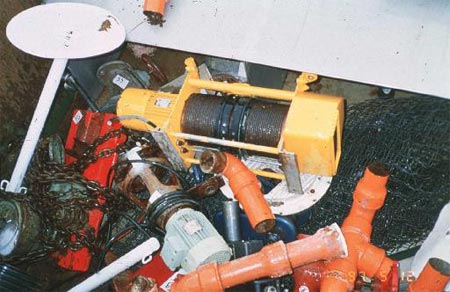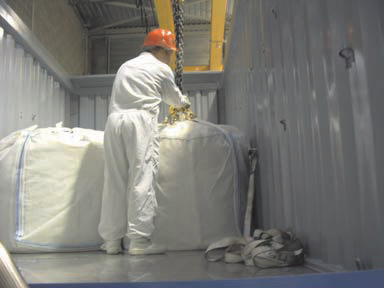Very low-level waste (VLLW)
VLLW: very low-level waste
VLLW: the least radioactive category
Very low-level waste (VLLW) sits between ordinary non-radioactive waste and low- and intermediate-level waste. Its activity is less than 100 becquerels per gram (100 kBq/kg). It is industrial waste with an average activity of around 10,000 Bq per kilogram.
It seems paradoxical to talk about very low radioactivity but thousands of decays per second, but remember that the becquerel is a very small unit. A natural rock like granite puts out some 4000 becquerels per kilogram. The activity of our bodies is 8000 becquerels.

Obsolete laboratory equipment
This old laboratory equipment, which has been in contact with radioactive elements, will be disposed of as very low-level scrap metal waste.
© ANDRA
The radioactivity of very low-level waste is close to natural radioactivity, and will have dropped to the level of natural radioactivity after a few decades. For this reason, disposing of this waste does not pose any major problems. However, certain precautions still have to be taken and disposal sites have to be monitored.
This type of waste consists of rubble (concrete, plaster, soil) and scrap metal (metal structures, pipes), which have been in contact with radioactive products or have been made weakly radioactive through irradiation by neutrons. It also consists of large but not very radioactive components from nuclear power plants, such as steam generators.

Contaminated scrap metal
This scrap metal and pipework, which has been slightly contaminated by radioactive products, is also classed as very low-level waste.
© ANDRA
VLLW comes from:
– the nuclear industry, with the dismantling of nuclear power plants, laboratories, research centres and centres that produce radioactive materials
– conventional industries (e.g. the food processing, chemical and metal industries), which use naturally radioactive materials;
– the cleanup and rehabilitation of sites that were polluted in the past, such as certain laboratories and industrial facilities.
It is estimated that the dismantling of France’s current nuclear power plant fleet will produce 80 million tonnes of this waste. There is still only limited experience of dismantling nuclear power plants. Only a small number of old power plants that have now been decommissioned, such as the one at Brennilis in Brittany, have been dismantled. The SuperPhénix reactor is expected to be dismantled in the near future. In principle the cost of future dismantling is covered in the price per kilowatt-hour.

VLLW in big bags
Very low-level waste consists of 50 to 60% concrete, rubble and soil, 20 to 40% scrap metal, around 10% non-metal waste, and finally 1 to 5% chemically hazardous waste. Its conditioning may be basic, but the dispersal of dust during handling and disposal must be avoided. This waste is placed in big bags.
ANDRA (FR7-01 TFA)
In France there are surface facilities for the disposal of very low-level waste. The CIRES waste collection, storage and disposal facility for VLLW is at Morvilliers center in Aube (Champagne-Ardenne). CIRES was opened in August 2003.
Other articles on the subject « Waste Classification »
High-level waste (HLW)
Spent nuclear fuels and vitrified waste High-level waste is waste for which management is a prior[...]
Intermediate-level waste (ILW-LL)
Intermediate-level long-lived waste (ILW-LL) The French classification system uses ILW-LL to refe[...]
Low and intermediate-level waste
Low- and intermediate-level short-lived waste (LILW-SL) In France, the oldest disposal facility f[...]
Low-level waste (LLW-LL)
Low-level long-lived waste (LLW-LL) Low-level waste, which has a much lower level of activity tha[...]